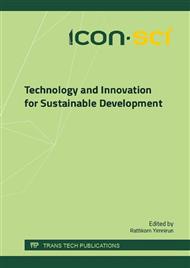p.187
p.191
p.195
p.199
p.203
p.207
p.211
p.219
p.223
Preparation of Silk Fibroin Nanofibres by Needleless Electrospinning Using Formic Acid-Calcium Chloride as the Solvent
Abstract:
In this study, silk nanofibre sheets were prepared by a needleless electrospinning from silk fibroin in a mixture of formic acid and calcium chloride. The influences of the concentration of calcium chloride on the properties of spinning solution, morphology of the silk electrospun fibres and the spinning performance of the spinning process were examined. The results show that calcium chloride can improve the solubility of silk fibroin in formic acid. The morphology of electrospun fibres was characterized by a scanning electron microscope (SEM), which indicates that the morphology of obtained fibres was influenced by the weight ratio of silk fibre to calcium chloride in the spinning solution. It was observed that the concentration of calcium chloride in the spinning solution influenced the diameter of the silk electrospun fibres, with an increase in the concentration of calcium chloride increasing the diameters of the electrospun fibres. The silk nanofibres had diameters ranging from 440 to 1900 nm. However, increasing the concentration of calcium chloride in the spinning solution had a less influence on the spinning performance of electrospinning process.
Info:
Periodical:
Pages:
203-206
Citation:
Online since:
July 2016
Price:
Сopyright:
© 2016 Trans Tech Publications Ltd. All Rights Reserved
Share:
Citation:


